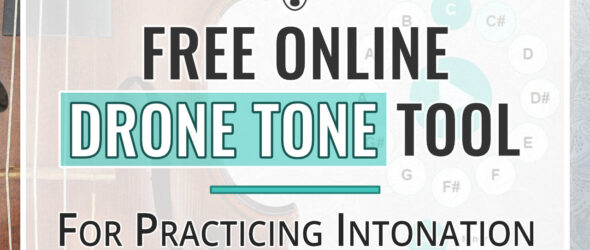
I’m so excited to share my new drone tone app with you!
A drone is a sustained tone that you can play along with to practice playing in tune.
If you sometimes have trouble telling whether or not your notes are in tune, or if you’d just like to train your ear, the new drone tone tool I’ve created will be essential to your practice!
How to Use the Drone Tone App
- Choose the note name of the chord you’d like to hear. The drone will automatically start playing! You’ll hear a descending chord: The tonic (the note name you chose), the fifth, the third, and finally the tonic again, this time an octave lower than the first.
- You can switch between major and minor chords below the chromatic wheel to help you practice different kinds of scales, arpeggios, and even pieces in a variety of keys.
- Adjust the volume to your liking, so that the drone tones are as loud as your violin.
- Press play to hear the drone tones, and start practicing!
Additional Settings
Full Screen
Press the full-screen button to practice with the drone tone tool without any other distractions.
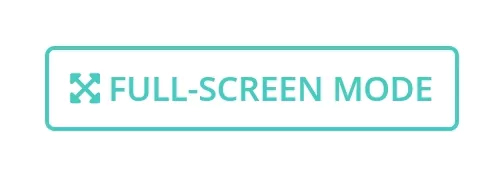
Bookmark this page
Add a bookmark to this page within your browser, or even set this page as a shortcut on your phone’s home screen to find this tool easily when it’s practice time!

How to Practice with Drone Tones
Practicing with a drone has so many benefits! Simply listen to it to train your ear to hear perfect intonation; play a scale alongside it to check that you’re playing in tune; practice arpeggios with it to hear new intervals and their qualities.
Before practicing with drones, take your time to tune your instrument. Feel free to use my tuner for this! The standard tuning pitch is A = 440 Hz. If you use your tuner adjusted to this tuning system, your violin strings will be in tune with my drone tone tool.
You can practice a wide range of intonation exercises with drones playing in the background. The pitches you hear will never change, giving you a reliable reference in which to tune the notes on your violin.
How to Choose the Right Drone
Drone chords are chosen by the letter name of the root (first note) or the chord. My tool has both major and minor chord options.
But how do you choose the right drone to practice with?
If you’re playing a scale, choose the same letter and quality (major or minor) as your scale. For example, if you’re practicing a D Major scale, choose the D Major drone. The notes will align beautifully with the notes in your scale. You can follow these same directions if you’re working on an arpeggio.
If you want to practice a song, take a look at the key signature. Don’t stress if you’re unsure how to find the key signature. Learn how to here, or take a look at the very last note of your song. That’s often the same note as the key! So for example, if the last note of your song is F, the song might be in F Major.
Here are a few tone practice suggestions to get you started with drones:
Single Notes
The most basic way to start practicing with a drone is by putting on a note and matching it on your violin. Does your violin sound in tune with the pitch? If not, check your tuning, and adjust your fingers as needed. Go very slow, matching single notes between your violin and the drone.
Scales
Next, try practicing slow scales with drones. My tool plays a full chord, so if you practice a scale alongside my drones, you’ll hear the first, third, and fifth notes of the scale all at once. You’ll experience a wide range of intervals between yourself and the drone during the scale. Some will sound major, and others minor. Some of these intervals might sound dissonant (almost clashing), but if you’re in tune, it’ll still sound very pure.
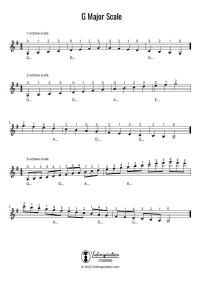
Free Violin Sheet Music
G Major Scale – 1, 2, and 3 octaves
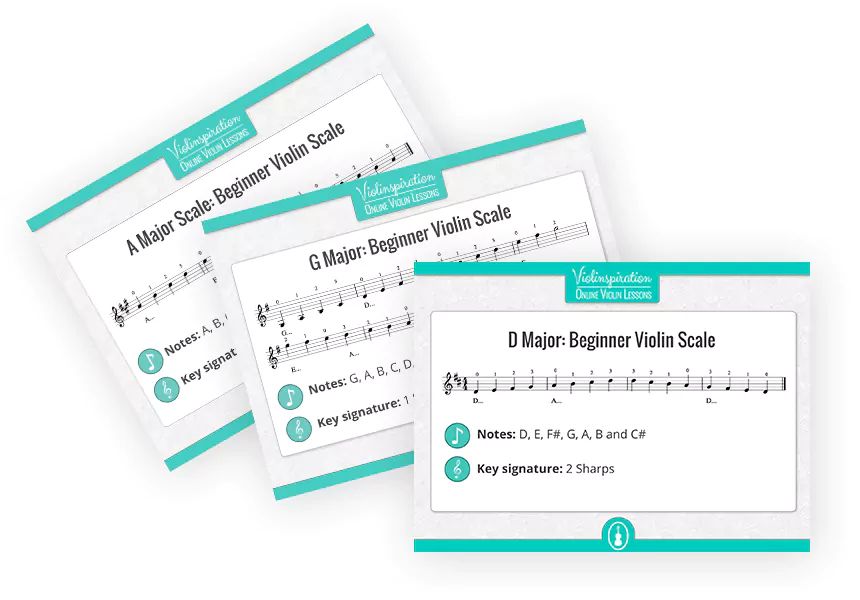
Free Download: 5 Most Common Violin Scales
for Beginners
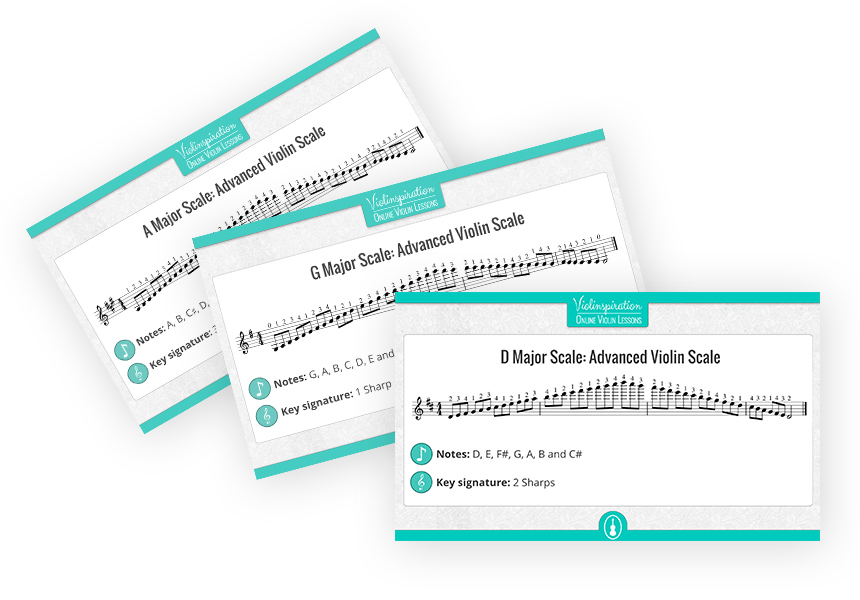
5 Most Common Violin Scales
for Advanced Player
Arpeggios
Practicing arpeggios helps you navigate the fingerboard. By practicing arpeggios with drones, you’ll hear how each note of the arpeggio sounds against the tonic note. My drone tool plays a full major or minor chord, so as long as you’re practicing a major or minor arpeggio, you’ll hear all of the notes you play from the drone, giving you excellent reference points.
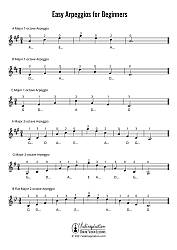
Arpeggios for Beginners
Get Free Easy Exercises
FAQ
What is a drone in music?
In music, a drone is a tool that plays one or more sustained tones that you can then play along with to check your tuning and train your ear.
Many musicians practice with drones when they find themselves playing out of tune. Hearing reference pitches from the drone tool gives you a good idea of what exactly each note should sound like.
A drone tool, like a tuner or metronome, will help you become a better musician!
What tones are played by the drone tool?
The drone tone tool I’ve created plays a full chord: the root (tonic), third, fifth, and lower tonic of the scale you choose.
For example, if you choose C Major, you’ll hear the broken chord in descending order: a high C, a lower G, an E below that, and finally a lower C.
The cello sounds of my drone tool should blend beautifully with your violin.
How to practice with a drone tone?
Start with slow scales and arpeggios to practicing listening and playing in tune on your instrument.
After that, you can practice nearly anything with drones!
How do I listen to the drone?
When you practice playing along with a drone, you want to listen to both yourself and the drone at the same time. This can be a little tricky at first, but eventually, you’ll learn what does and doesn’t sound in tune together.
- Play any note together with the drone
To start training your ear and understand tuning alongside the drone, choose any note you’d like, put the drone on that note, and play that same note on your violin. It’s usually easy to hear if two of the same notes are in tune, or if they’re slightly out of tune. - Play a note a third higher
Next, keep the drone on the same note, and instead play a note a third higher. For example, if you were playing a G, play a B instead. This will create an interval of a third between the drone and yourself. This is an interval we hear often throughout all genres of music, and it’s a somewhat simple interval to hear. - Adjust your finger
Try adjusting your finger higher and then lower, and see if you can hear when exactly the note goes in tune and out of tune. It’ll train your ear on what exactly to listen for.
What are the benefits of practicing with a drone tone?
By practicing with a drone:
- You’ll learn to play your instrument in tune: where to place your hand on the fingerboard to create the best sound.
- You’ll also train your ear to hear correct intonation. Having a well-trained ear will help you adjust your intonation on the fly, which is essential in all types of music-making!
If you haven’t already, try practicing with my online tuner and metronome as well. These are tools all musicians use to master their instruments and general music-making. Happy practicing!























